Filter by
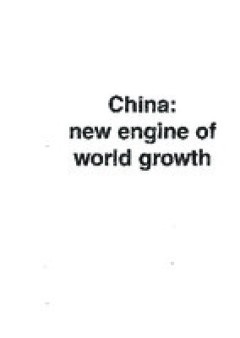
China: New Engine of World Growth
Twenty-five years of reform have transformed China from a centrally planned and closed system to a predominantly market-driven and open economy. As a consequence, China is emerging as the new powerhouse for the world economy. China: new engine for world growth discusses the impact and significance of this transformation. It points out risks to the growth process and unfinished tasks of reform. …
- Edition
- -
- ISBN/ISSN
- -
- Collation
- -
- Series Title
- -
- Call Number
- -

The China Boom and its Discontents
Economic policy; Commercial policy; Industrialization; Economic conditions; China
- Edition
- -
- ISBN/ISSN
- -
- Collation
- -
- Series Title
- -
- Call Number
- -
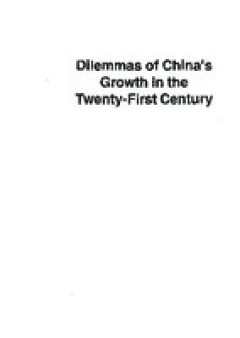
Dilemmas of China's Growth in the 21st Century
Since economic reforms began in 1978, China has been a focal point for observing the effects of market liberalisation. China has not only truly become one of
- Edition
- -
- ISBN/ISSN
- -
- Collation
- -
- Series Title
- -
- Call Number
- -
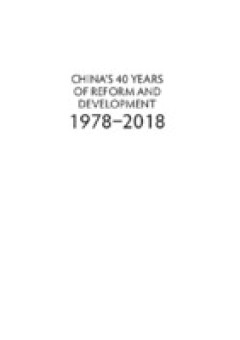
China’s 40 Years of Reform and Development: 1978–2018
The year 2018 marks 40 years of reform and development in China (1978–2018). This commemorative book assembles some of the world’s most prominent scholars on the Chinese economy to reflect on what has been achieved as a result of the economic reform programs, and to draw out the key lessons that have been learned by the model of growth and development in China over the preceding four decade…
- Edition
- -
- ISBN/ISSN
- 9781760462246
- Collation
- -
- Series Title
- -
- Call Number
- -

China - Linking Markets for Growth
China’s prosperity is at the core of the emerging Platinum Age of global economic growth. Rapid economic growth has been underpinned by expansion in its domestic markets, and the integration of domestic and international markets in goods, services, capital, labour and foreign exchange. Global commodity prices have reached historic highs, while China’s capital outflows have helped to hold do…
- Edition
- -
- ISBN/ISSN
- -
- Collation
- -
- Series Title
- -
- Call Number
- 337

Rising China : Global Challenges and Opportunities
Where the last three decades of the 20th century witnessed a China rising on to the global economic stage, the first three decades of the 21st century are almost certain to bring with them the completion of that rise, not only in economic, but also political and geopolitical terms. China’s integration into the global economy has brought one-fifth of the global population into the world tradin…
- Edition
- -
- ISBN/ISSN
- 9781921862298
- Collation
- -
- Series Title
- -
- Call Number
- 650
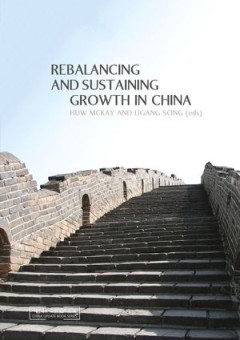
Rebalancing and Sustaining Growth in China
The idea that China’s economy needs to rebalance is no longer controversial inside or outside the country. Whether it be the increasing recognition of income
- Edition
- -
- ISBN/ISSN
- 9781921862793
- Collation
- -
- Series Title
- -
- Call Number
- 650
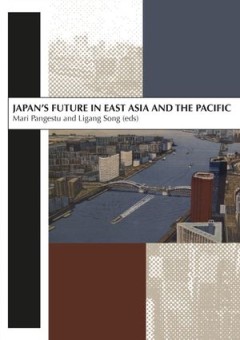
Japan's Future in East Asia and the Pacific
Japan’s Future in East Asia and the Pacific takes a ’big-picture‘ approach to Japan’s economic place in East Asia alongside that of China. It analyses Japan’s successes and experiments in trade policy as well as its failures in macro-economic policy. Japan’s diplomatic and economic integration strategies are also examined for their impact on East Asia and on Australia. The collectio…
- Edition
- -
- ISBN/ISSN
- 9781921313622
- Collation
- -
- Series Title
- -
- Call Number
- 650
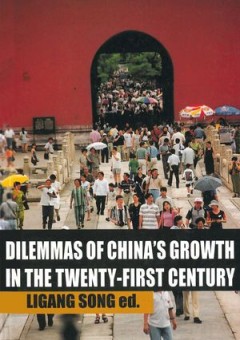
Dilemmas of China's growth in the Twenty-First Century
Since economic reforms began in 1978, China has been a focal point for observing the effects of market liberalisation. China has not only truly become one of
- Edition
- -
- ISBN/ISSN
- 9781922144584
- Collation
- -
- Series Title
- -
- Call Number
- 650

Deepening Reform for China’s Long-term Growth and Development
The Chinese economy has entered a new phase of development in which sources of growth are not so much dependent upon pure increases in labour, investment and credit expansion, but from productivity improvement, structural changes, technological progress and the benefits from improvement of the social security and welfare improvement. When market functions are fully established to become a main …
- Edition
- -
- ISBN/ISSN
- 9781925021776
- Collation
- -
- Series Title
- -
- Call Number
- 650
 Computer Science, Information & General Works
Computer Science, Information & General Works  Philosophy & Psychology
Philosophy & Psychology  Religion
Religion  Social Sciences
Social Sciences  Language
Language  Pure Science
Pure Science  Applied Sciences
Applied Sciences  Art & Recreation
Art & Recreation  Literature
Literature  History & Geography
History & Geography